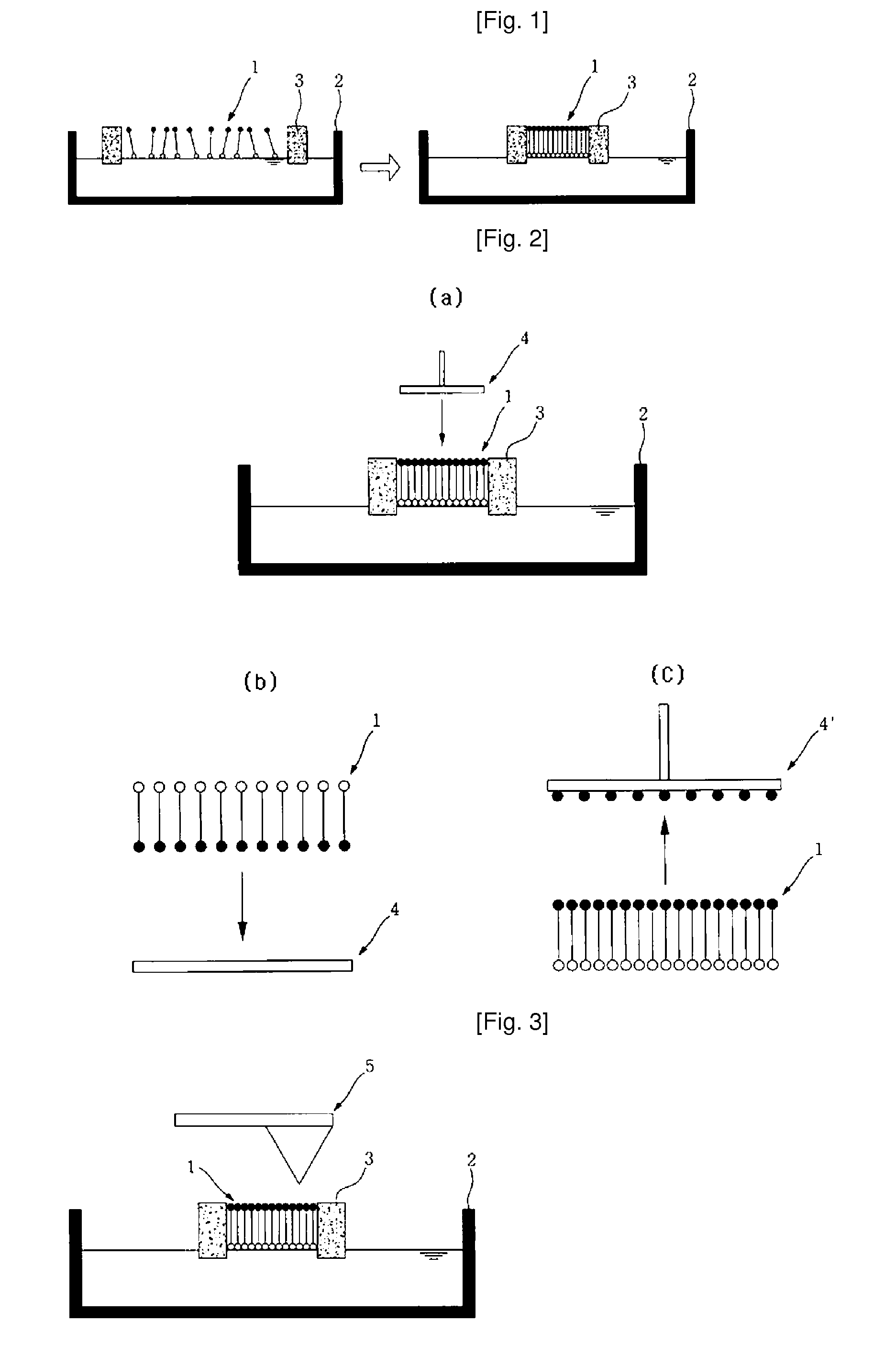Attaching Method of Nano Materials Using Langmuir-Blodgett
a nanomaterial and nano-blodget technology, applied in the field of nano-material attachment methods, can solve the problems of difficult work on a substrate having a size of more than 300 mm, limited optical resolution, and limited application of materials to this method, and achieve the effect of easy manufacturing of nano-patterns and low production costs
- Summary
- Abstract
- Description
- Claims
- Application Information
AI Technical Summary
Benefits of technology
Problems solved by technology
Method used
Image
Examples
Embodiment Construction
[0044]In the formation of a monolayer of nanomaterials according to the present invention, Langmuir-Blodgett (LB) method is used. For example, as disclosed in the FIG. 1, amphiphilic nanotubes (1) which have been dispersed into a volatile solvent in a stable state are applied over water contained in an LB trough (2), and pushing a barrier (3), after evaporation of the solvent, to gradually reduce the area of the water surface and thus to obtain an LB film where the nanotubes are aligned in a certain orientation at the interface.
[0045]In order to obtain an LB film having a certain orientation in more effective way, it is preferred to set up suitable conditions for the film formation according to the types of nanomaterials, or to make the nanomaterials to have amphiphilic characteristics by imparting hydrophilic functional groups to one end of the nanomaterials and non-hydrophilic functional groups to the other end of the nanomaterials. Additionally, the nanomaterials can be made to b...
PUM
| Property | Measurement | Unit |
|---|---|---|
| size | aaaaa | aaaaa |
| diameter | aaaaa | aaaaa |
| semiconductor width | aaaaa | aaaaa |
Abstract
Description
Claims
Application Information
 Login to View More
Login to View More - R&D
- Intellectual Property
- Life Sciences
- Materials
- Tech Scout
- Unparalleled Data Quality
- Higher Quality Content
- 60% Fewer Hallucinations
Browse by: Latest US Patents, China's latest patents, Technical Efficacy Thesaurus, Application Domain, Technology Topic, Popular Technical Reports.
© 2025 PatSnap. All rights reserved.Legal|Privacy policy|Modern Slavery Act Transparency Statement|Sitemap|About US| Contact US: help@patsnap.com



